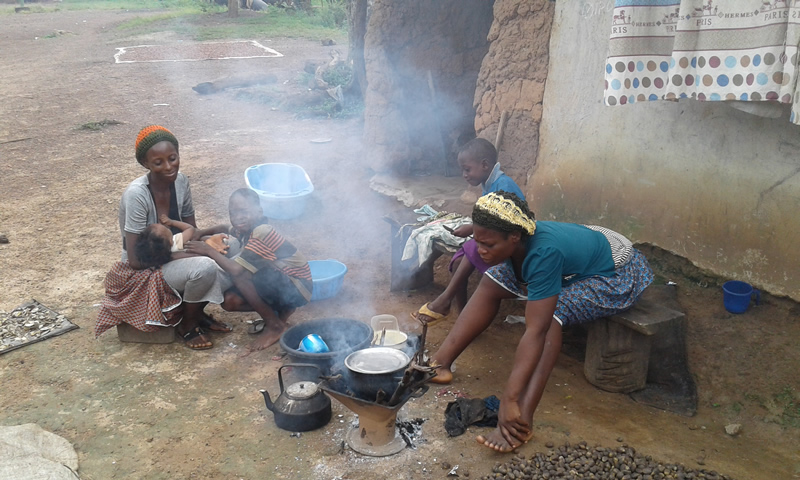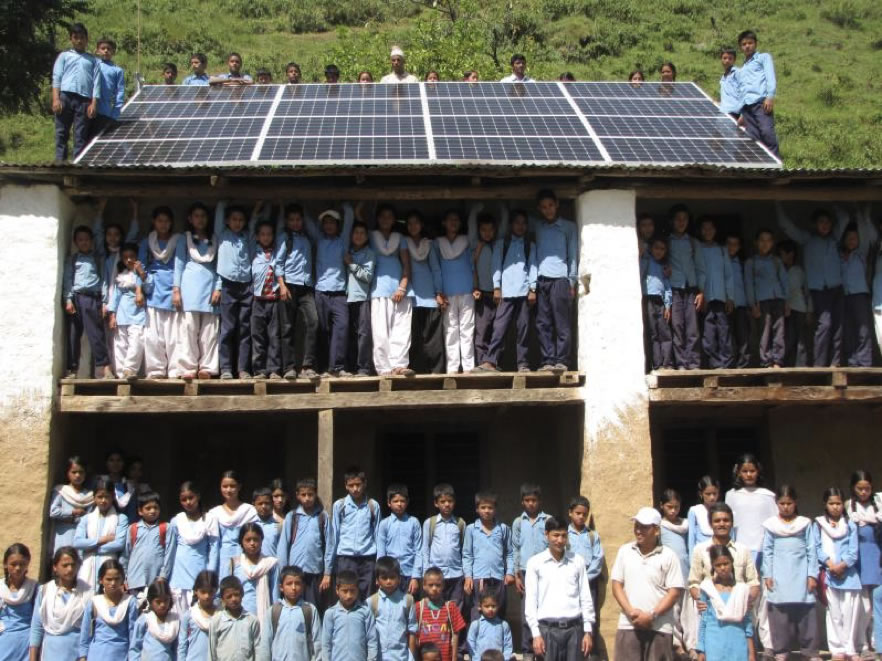
One of the things I like most about running HOMER Energy is the window it provides to people all over the world. My staff and I travel to every continent. This travel gives us a perspective on the diverse range of energy challenges and the different roles that distributed energy can play in addressing those challenges.
We are focusing on energy access this month, and this post focuses on the challenge of energy access for over a billion people who have to use kerosene for lighting and walk great distances to charge their cell phones. Without electricity, their villages have no economic activity, no provider of healthcare, and probably no teacher for their children, while women often spend hours carrying water in the absence of electric water pumps.
Conventional wisdom has been that rural people in developing countries would get access to electricity when the national utility extended the grid, similar to what happened in the US between 1930-1950. In the meantime, diesel generators were the answer, even if they could only provide power for a few hours in the evening. What has actually happened is that clean, renewable power has instead become the energy solution of choice. That’s partly because of the rapid decline in prices for renewable energy and storage, and partly because of the rising cost of extending central grid access to remote communities.
It has been exciting to watch these changes since the HOMER software was first created in 1992, and to note the role we have played in this transition, providing economic analyses of myriad energy projects in every corner of the world.
We can now say with certainty that hybrid renewable mini-grids designed using HOMER prove to be less expensive than simple diesel generators, more reliable than the power that a national utility can provide and definitely less polluting.
Over the past year and a few months I was fortunate to make two trips to Africa, and one major trip to several countries in Asia. HOMER Energy engineers and support staff traveled to the South Pacific and various countries in South America. One even went to Greenland – one of our most unusual destinations. These trips to conferences, training workshops, and field visits remind us of all the people who are still struggling to make ends meet without basic electricity and the role of reliable power in lifting people out of poverty. Fortunately, HOMER shows that the most economical way to provide energy access to the last billion people is using clean renewable power.
For that reason, I’m always grateful for the chance to travel and meet with young, idealistic engineers who are trying to solve the problem of energy access, along with determined veterans who have been doing this for years. I come away from these experiences with the most profound admiration and hopefulness.
For that reason, I’m always grateful for the chance to travel and meet with young, idealistic engineers who are trying to solve the problem of energy access, along with determined veterans who have been doing this for years. I come away from these experiences with the most profound admiration and hopefulness.

In this month’s newsletter we profile one company – Gham Power in Nepal – that has made remarkable progress in producing over 2,000 clean electricity installations for remote mountain communities, farmers and commercial businesses in less than a decade. Not only has Gham figured out the engineering problems – how to design, build and manage distributed energy – but they are also building on their engineering success to tackle economic issues that bedevil many energy access projects: how can we plan and finance renewable energy infrastructure so it will be economically sustainable and even profitable? How can communities take ownership of microgrids and other new electricity resources and use them to create new business opportunities?
As we head into the new year, I’m not only proud of the role that the HOMER Energy software has played in helping communities get access to electricity generated from renewable resources, but I’m also looking ahead to the rapid growth of the microgrid / minigrid market in 2019, and exploring ways that we can make HOMER Energy design tools and expertise more accessible.
I’m gratified that international development agencies and other energy experts have come around to the idea that decentralized, hybrid renewable energy projects are the least cost option for providing electricity to remote communities.
Training is key to the continuing expansion of energy access
Designing hybrid renewable energy projects and conducting prefeasibility studies can be a complex task, and many HOMER users are formally educated as engineers. But, dedicated training in HOMER – and the modeling of distributed energy systems before building them – can lower the financial risk of hybrid renewable energy projects and increase the chances of success. That’s why we would like to make training more broadly available. We want to be sure that utility and government officials, project developers, renewable energy experts, equipment manufacturers, and others can all take advantage of the HOMER software to simulate the performance of their designs and improve the financial and engineering prospects for these projects.
To that end we are inviting collaboration from HOMER users with experience in curriculum development, so we can develop online training and certification programs that will be widely available to everyone.
We hope you will join us in spreading the word about the power and utility of distributed energy modeling and in helping us fulfill our mission of “clean power everywhere.” If you are interested in participating in our training project and have experience with HOMER and curriculum development just email us at:
